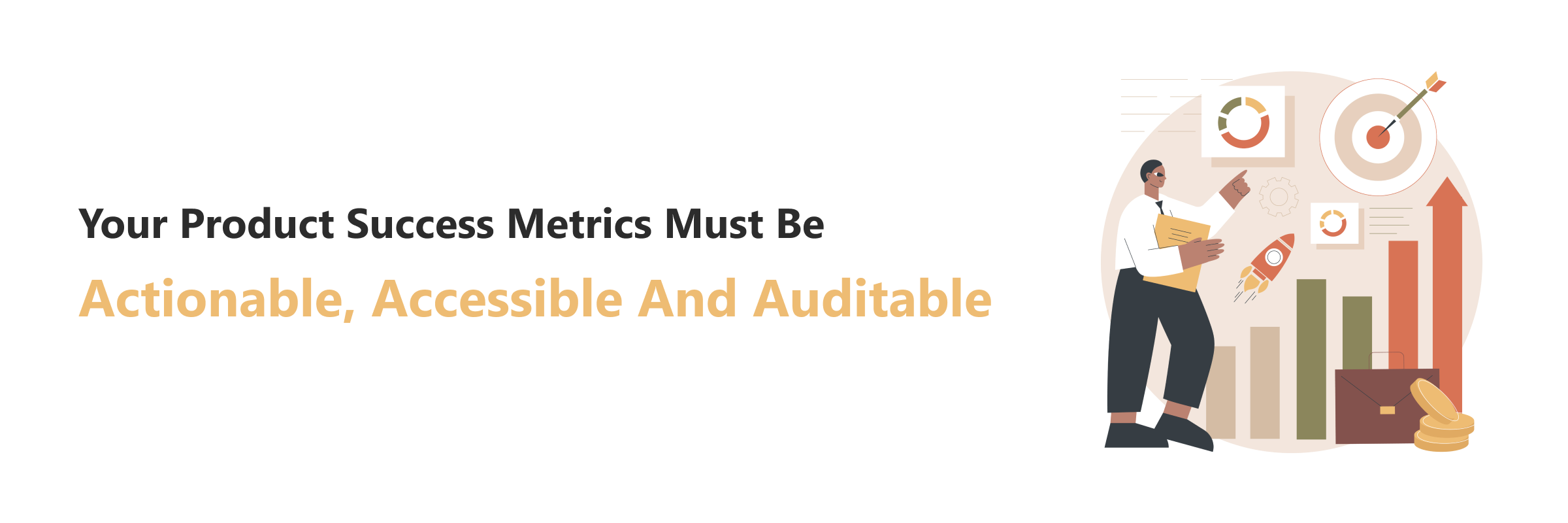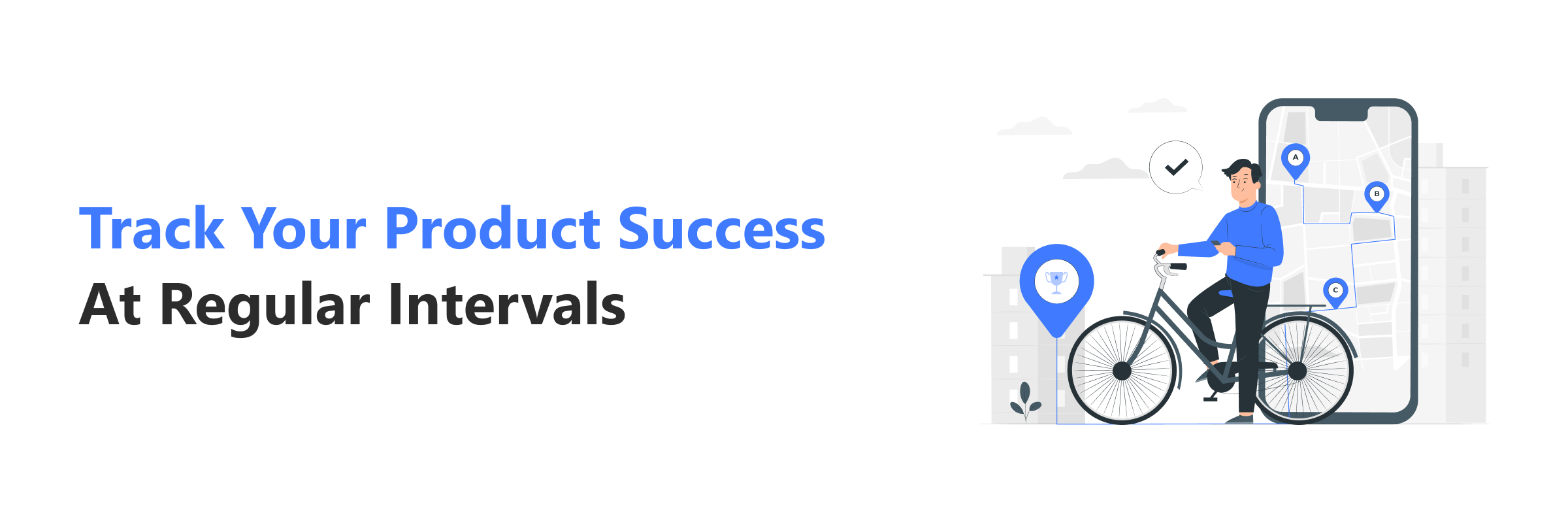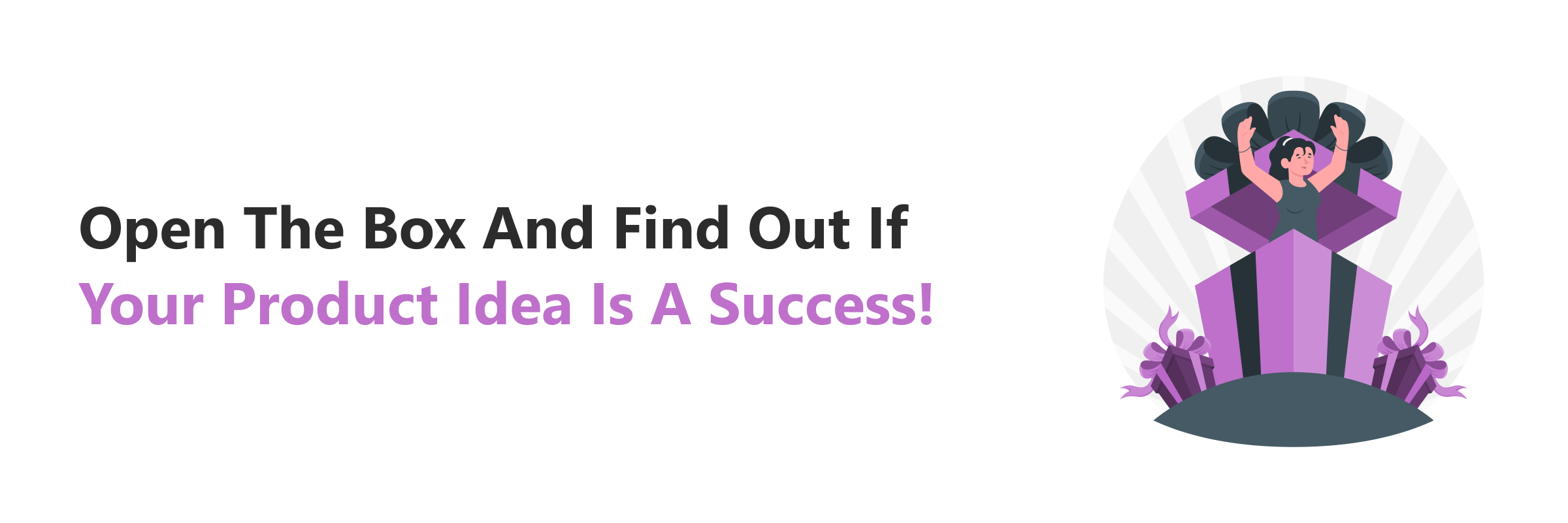What do Vincent Van Gough, Franz Kafka, and Galileo Galilei all have in common?
An artist, a writer, an astronomer – all three were relative strangers to each other, and existed in different centuries between the pages of history. All three were creative geniuses who were intellectually well ahead of their times. All three are world renowned for their work.
Here’s another thing they had in common! All three also died under tragic circumstances – alone, depressed, destitute, and/or as a social recluse. Their genius and the brilliance of their life’s work was recognised only after their demise.
So, even though they are celebrated, they never got to enjoy the fruits of their success. Make sure your product ideas do not suffer the same fate.
Now, don’t be alarmed! There are product success metrics that you can use to check the feasibility of your product even before you start the development process. And, there are also numerous ways to measure product quality before you go live with a real audience.
They will give you an idea of whether your product is likely to succeed in the market. Or whether you need to pump the brakes on your product idea to iron out the kinks.
In this blog, we try to understand the importance of determining your product’s chances of success beforehand, and explore 8 proven ways to measure product quality before your product reaches the marketplace.
Why Do You Need Product Success Metrics?

Product success metrics, also commonly called KPI’s (Key Performance Indicators), are measurable data inputs that can be tracked, monitored, and analysed to understand the success of a product, be it in terms of functionality or commercial success.
Take a quick look at why product success metrics are important:
Valuable Information and Insights
The successful analysis of product success metrics such as conversion rates, churn rates, and recurring profits, will help you save big in the future – save on time, money, efforts, and the resources you’d need to use.
The valuable insights you get from analysing your product performance indicators will let you know how well your product is faring, and what the strengths and weaknesses of your product are. This, in turn, will help you play to your strengths and give your attention to problem areas. End result? A commercially successful product!
Helps Your Vision Evolve
Your vision is something you need to hold close to your heart. Even if your product ideas change completely, make sure your vision does not compromise, but only changes for the better.
Product success metrics can help you ensure that you are on track to your vision, especially if you define the right metrics early on. And, if you discuss your project metrics before the product development stage and before your product launch, then you will be able to set a better road map for your final product.
If you want to understand how to make a new product successful, take a look at our compilation of 10 tips to turn a great product idea into a commercially successful product.
Helps You Make Better Product Decisions
In a way, you can say that setting product success metrics helps you set the stage to prepare you for the eventual success of your launched product.
You will be able to make data-driven decisions , which in turn will optimise your business outcomes. You can avoid bad business decisions and the associated hassles such as product recalls.
Helps Your Build Investor Faith
You need to stay on the good side of your investors if you wish to keep the fund money flowing. Investor faith is an important part of your entrepreneurial journey and meeting your KPIs can help you win over stakeholders.
So, ensure that the product success metrics are aligned with your business objectives and financial goals. The better your company’s ability to make your KPI’s align with your business aspirations, the better your relationships with your investors will be.
Also Read: 17 Vital Factors Venture Capitalists Evaluate Before Investing in Your Startup
Help Detect Red Flags Early
Defining product success metrics right from the start has yet another incredible advantage! You can nip issues in the bud if you track your success metrics regularly.
If you are an organisation that cares about user experiences, you will give importance to product testing and debugging before your product and KPIs are important indicators in the testing processes. They are not only ways to measure product quality, but also help you reset your product roadmap if it veers off course.
By implementing reliable Key Performance Indicators, you can reduce technical debt, avoid unnecessary budget inflation, and excessive scope creep in the long run.
8 Ways to Determine if Your Product Will Succeed

Even good product ideas come with ambiguity related to product success.
Your product idea may or may not succeed – you won’t really know if you have managed to become valuable to your end users until after you actually launch your product. So, instead of wondering, “Will my idea work?”, just start trying to make it work.
From the initial ideation stage to the final rollout stage of your product development, your project will encounter successes and failures alike. It is important to celebrate the small wins and persist despite the losses to come up with a successful product. And, to make sure you learn from your mistakes while doing so.
Below, we’ve compiled a list of 8 foolproof ways to help you figure out if your product ideas are likely to succeed, or in other words…read on and see if your product ideas are market-ready!
Ask Around!
There are many ways to check if your product will succeed or fail, and one of the simplest ways is to…ask around!
Simple as it sounds, sometimes asking around is the most effective way of vetting your new product’s success before you release it to the market and subject it to public scrutiny. You can talk to your friends, peers, and other industry experts who are familiar with the market you are trying to build a niche in.
Experienced professionals can tell you if your product is likely to succeed or fail. But, that’s not all. As a bonus perk, they can also use their years of experience to guide you in the innovation of your product.
2. Don’t Skip the Research
Research may sound like a tedious and monotonous process, but it’s not a step that you can skip. Not without facing adverse consequences, anyway.
You must invest enough time and resources on the various types of research required to launch a startup. This will include multiple facets of research, such as market research, product research, and SWOT (Strengths, Weaknesses, Opportunities, and Threats) analyses, among others.
The amount of research you need to do to vet your product ideas and identify the right market is intense.
3. Invest in Your Prototype
Your prototype is important. A good prototype can do wonders for your business prospects.
It can help you build your inventor’s confidence in your vision, and validate your product ideas. A prototype can also help you resolve problems quickly, market your product, connect with your end users, and create opportunities for innovation, among others.
Read more: Why Should You Create a Prototype for Your Startup Idea?
Prototypes are not just to show investors, but also to check how well your product will resonate with your audience. Even though your prototype is a minimum viable model, try to incorporate maximum core functionalities into it.
4. Think from Your Customer’s Shoes
At the end of the day, your whole business revolves around solving your customer’s pain points and making their lives easier. So, start thinking from your customer’s shoes to gain a better understanding of what products are popular with your audience.
Check whether your product ideas address a market need. Your product success depends on it.
-
-
- Did you create your product niche around your consumer’s requirements?
- Is your product user-oriented and bug-free?
- Will your product ideas meet your consumers’ expectations?
- Will your customers consider your product successful?
- Will your product ensure customer success?
- Is the customer experience you provide exceptional?
-
If you think from your customer’s perspectives, you’ll get an idea of what your consumers expect from you.
Now, give this a thought: have you implemented the right ways to measure product quality so that every single one of your rollouts is of world-class quality?
5. Get Feedback from Potential Customers
Your customers are the lifeblood of your organisation. Without them, your business becomes irrelevant. So, when it comes to a successful product, no one knows better than your potential customers!
Engage with your potential customers to get their feedback and suggestions for your product. You can connect with them using questionnaires, one-on-one meetings, through social media channels, and by creating focus groups, among other ways.
The more importance you give to implementing feedback loops, the more innovative your product will be. This is because all your stakeholders will have something to contribute to your product development. So, another foolproof way to ensure the success of your product is to give everyone a chance to voice their opinions.
6. Check if Your Product Solves an Issue in the Market
Problems come first, not solutions. Your product should solve a problem that exists in the market.
One of the best ways to identify if your product will succeed is to make sure that your offerings fulfil a need in the marketplace.
-
-
- Is your product useful to your target market?
- Does your product make the lives of your end users better?
- Is your product easily accessible and affordable?
- Can your product impact the world in a positive way?
- Will your product ideas help you give back to your society?
- Will your product development endeavours be sustainable?
-
You need to consider the above factors and more if you are to affirm the success of your product once it hits the market.
7. Are People Excited by Your idea?
Now, it can be nerve-wracking to present your product idea to the world for its approval. It can also be one of the most rewarding experiences of your life, if the stars align in your favour and your great product idea clicks!
As you learn and your product development project matures, you might have to make some adjustments to your original idea to make your end product market-ready. But, that’s okay, because initial product ideas are not supposed to be rigid. In fact, your final product will be good only if your product ideas evolve to meet your user expectations.
So, be sure to keep the above-listed pointers in mind before you initiate your product development process. It will help you ensure that when your product is finally ready for launch, it will be a resounding success.
Read: How to Determine The Right Time For Your Product Launch?
8. Estimate Your Product Costs
One of the best ways to check if your business will succeed is to make sure that your progress aligns with your financial targets.
It is a sure red flag if the costs incurred during your product development and launch activities do not break even in accordance with your preset deadlines.
In other words, you need to start making profits according to the schedule planned in order to meet your financial projections. Hence, it is important to estimate the costs of your product beforehand and curate your budget plan accordingly.
To avoid under or over-estimating your budgetary needs, you need to estimate your product costs well in advance and consider various important parameters such as resource costs, consumables costs, customer acquisition charges, product team salaries, and miscellaneous other expenditures.
Conclusion

If you feel anxious about presenting your idea for public inspection, thinking about Schrodinger’s Cat might give you some inspiration.
If you’re not familiar with Schrodinger’s Cat, let us break it down for you. As a thought experiment, Mr. Schrodinger asks us to consider a fictitious feline in a closed box.
To make things more exciting, there’s a bit of radioactive substance dropped into the box with the cat. Now, once the radioactive substance decays, it can trigger a poisonous release that can kill the cat. But, unless you open the box and see the cat alive and kicking with your own eyes, you can presume that it may or may not be alive.
Schrodinger’s Cat is famous for being alive and dead at the same time, until the box is opened and inspected. Much like the cat that is in the closed box, the success of your product could be alive or dead, until you open your product ideas up to the public and inspect them.
The reaction of your end users is important. You can check your product success with a simple question: ask your end users if they’ll invest in your product and pay a small part of the product price up front.
Read:7 Important Things to Remember While Building a Tech Startup from Scratch




